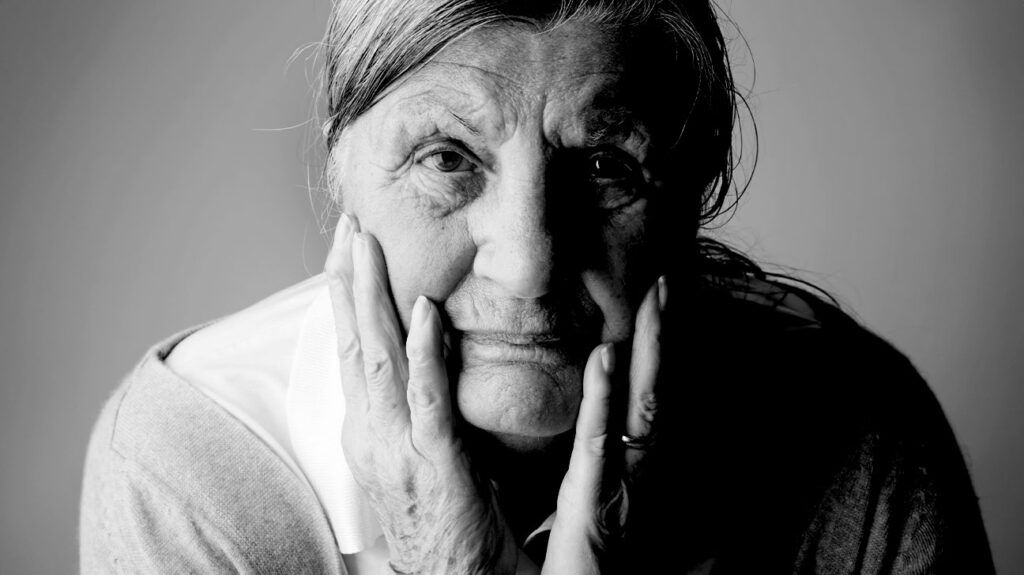Rosacea is a common, inflammatory skin condition that can worsen as a person ages.
Rosacea causes redness or discoloration of the skin and a rash, often around the cheeks or nose. In some cases, it can cause eye issues.
Treatment cannot cure rosacea, but it may help alleviate some symptoms. For some, rosacea can worsen as the person ages.
This article explores what is known about rosacea worsening with age, whether it goes away, managing flare-ups, and more.
A note about sex and gender
Sex and gender exist on spectrums. This article will use the terms “male,” “female,” or both to refer to sex assigned at birth. Click here to learn more.

Rosacea often affects females
A
They noted that people often experienced more persistent redness or discoloration and rashes as well as telangiectasia, or spider veins.
People over the age of 45 in the study also appeared less influenced by triggers, but they had more systemic conditions, such as endocrine metabolic disorders, digestive system disorders, or cardiovascular disorders.
It is unknown and understudied how rosacea affects males.
It may also have an association with several other co-occurring conditions. However, not enough evidence supports the need to screen for other conditions at the time of diagnosis. Still, some studies suggest that rosacea can increase the risk of conditions such as:
- neurological disorders
- cardiovascular conditions
- auto-immune disorders
- gastrointestinal conditions
- psychiatric disorders
It may also have an association with a lower quality of life due to embarrassment, low self-esteem, and feelings of stigmatization. These may not occur all at once and may develop over time.
Rosacea requires long-term treatment to help keep symptoms suppressed. Treatment does not cure rosacea, meaning a person needs to continue to take steps to manage the condition even between flare-ups.
Still,
Left without treatment, it can lead to scarring and severe dry eye if rosacea affects the eye.
In recent years, several advancements in treatment have
- topical creams and ointments
- changes in skin care and cosmetic routines
- light and laser therapies
- oral treatments
- systemic therapies to address comorbidities
- specific treatments targeting different types of rosacea
- combination therapies
A person should let a healthcare professional know if a flare-up occurs. They may recommend certain therapies to help calm and manage symptoms.
One of the most effective ways to manage rosacea flare-ups is to identify and avoid known triggers. Triggers are anything that causes a person’s symptoms to worsen.
Although triggers may vary,
- spices
- UV light, such as sunlight or from artificial tanning beds
- changes in weather
- drinking alcoholic beverages
Some other triggers
- histamine-rich foods, such as processed meats, aged cheese, or wine
- foods that contain cinnamaldehyde, such as tomatoes, chocolate, or citrus fruit
- hot beverages
The American Academy of Dermatology Association adds that stress, certain skin care products, some medications, and exercise can also trigger a flare-up. It recommends a person record things they come in contact with every day for 2 weeks and report how these affect their rosacea symptoms.
Once a person knows their triggers, they can actively try to avoid them or address them. For example, if stress causes symptoms to flare, a person may consider techniques to reduce stress, such as yoga, meditation, or therapy. If cold air causes symptoms to worsen, taking steps to protect the skin from the cold may help when going outside.
Other preventive steps can include making changes to skin care routines. People with rosacea should consider using pH-balanced skin cleansers instead of soap, applying SPF-30 or higher sunscreen when going outside, and using moisturizers daily.
To treat the skin directly, a
The following sections provide answers to frequently asked questions about rosacea.
At what age does rosacea peak?
Rosacea’s typical age of onset occurs between
It affects about 5% of the world’s population. Although it can affect anyone, it occurs most frequently in females and people with light skin colors.
Does rosacea get progressively worse?
Without treatment, rosacea can cause scarring and dry eye if it affects the eyes. With treatment and avoiding triggers, a person can often avoid flare-ups of symptoms.
Rosacea may lead to psychological or social distress due to embarrassment or stigmatization. This may lead to a lower quality of life if a person avoids social interactions because of their condition. Treatments for rosacea
Some evidence suggests rosacea may increase a person’s risk of developing other conditions, such as depression or cardiovascular disease, but doctors need additional research to determine possible connections.
Rosacea often occurs between the ages of 30 and 50. Triggers and ineffective treatments may lead to flare-ups, but most people will have a favorable outlook with effective management.
Avoiding triggers can help prevent flare-ups from occurring. Common triggers include hot beverages, certain foods, weather, and stress, among others. Taking steps to identify and avoid triggers can help a person manage the condition.
Individuals should speak with a healthcare professional to find the most effective treatment for them.
